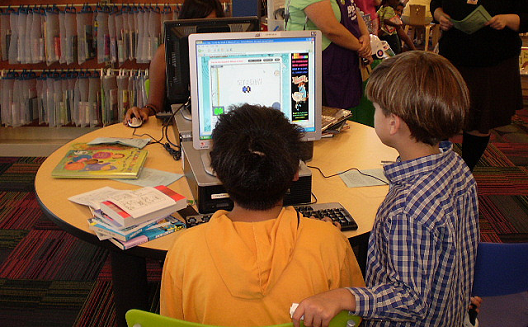Why every child in the Middle East should be taught to code

Coauthored by Carine Abi Akar and Nafez Dakkak.

Ever since the successful launch of Facebook in 2004, and
perhaps as early as the first dotcom bubble, several educators and
tech gurus have come out to encourage us to teach our kids-
all of them- to code. The most recent high-profile effort has
come in the form of U.S.-based code.org, which features endorsements from
celebrities of all walks of life (from Snoop Dogg to Dr. Oz, and the usual suspects such
as Bill Gates and Mark Zuckerberg).
Several arguments can be made that the Arab world’s educational
systems have more pressing and basic priorities, and, in some
cases, they in fact do. The region’s educational systems still deal
with issues of gender parity, access, and didactic teaching
practices. However, there are several crucial and transformative
reasons for teaching children how to code early on;
four of them are particularly relevant to the Arab
world and its current transition.
Firstly, the critical thinking void and lack of problem-solving
skills among our students has become a hindrance for the region’s
progression.
Second, the debilitating fear of failure, and the culture
surrounding it, is stifling tinkerability, innovation and
entrepreneurship.
Third, the prevalent lack of empowerment (even after the “Arab
Spring”) coupled with a very consumerist culture is taking us
backwards.
And fourth, youth unemployment rates, even by Arab government
statistics, are some of the highest in the world: an outstanding
25% for the region.
Learning how to code will not solve all these problems. Only a lot of time and dedicated effort might. However, learning to code should be an integral part of the solution.
The biggest misconception about learning to program is that it is specifically about learning a certain “programming language” or creating programmers. Programming is not just a skill; it is a mindset that can be exercised across various disciplines. It encourages sequential thinking, reflection, creation, collaboration, and resourcefulness. By learning how to think structurally and break problems down into manageable (programmable) chunks, children get a “thorough grounding in logic, reason and problem solving”.
As children begin to produce their own code and, eventually, their own programs or applications, they become empowered. They realize that they, as children from the Arab world, are not limited to consuming content online but can actually produce and create it. They don’t only know how to read, but they can also write and hopefully write well, moving from digital literacy to digital fluency.

To do so, youth must learn how to code and manipulate digital
media. The resulting empowerment can lead to qualities that are
foundational for a shift that finally sees the Arab world adding
more value than it consumes.
Most importantly, coding has a low barrier to entry and low cost of failure. So students who learn how to code also learn the importance of experimentation and hence failure. It enables them to finally see failure as “intentional iteration,” cementing an often dangerously missing “growth mindset” in our children. Getting over this fear of failure is one of the main obstacles to creating truly entrepreneurial economies in the region.
Of course, some of the students who learn coding early on will
decide they enjoy it enough to do it full time. If you aren’t sure
if that’s a good thing, talk to any
entrepreneur across the Arab world with a tech-based product.
The shortage of computer engineers and scientists is a global
phenomenon, but particularly acute in this region. Zuckerberg put
it best when he said: “[O]ur policy at Facebook is literally to
hire as many talented engineers as we can find. There just aren’t
enough people who are trained and have these skills today.”
Finally, as mentioned above, low barriers to entry allow an easier
entry point into entrepreneurship allowing some of our youth to
take an easier (but still very difficult) shot at
self-employment.
Ideally, the incorporation of programming into the curricula would happen at the K-12 level. Sadly, we don’t all live in Estonia, the birthplace of Skype, where 100% of first graders are already learning how to code.
Thankfully, there are several free options that are available
online. MIT’s Scratch
software, which focuses on teaching the logic and expression behind
coding with no “syntax,” is one of the most popular options with
children and schools.
Scratch is used at the university level too, most famously by
Harvard University’s CS50, its signature Introduction to
Programming course. Other popular options include Mozilla’s
Hackety Hack and Codeacademy., both self-guided,
free, and open to all.
Code.org has a more extensive list for children, and of course
it’s never too late for adults to
start, too.
This piece was inspired by “Coding for Success” by the Kernel’s Andy Young. Photo Credit: San Jose Library & moleculea.


